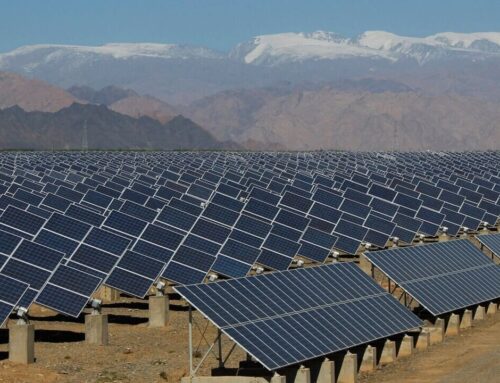62,000,000 GWh for millennia ― New discovery inside superhot rocks in these 4 American sta
May 24, 2025
When we think about energy sources for the future, what comes to mind is mainly solar energy and wind energy, after all, they are the most talked about in everyday life. However, a new discovery inside superhot rocks in four American states could change everything we currently know about clean energy.
The answer to a renewable energy future was beneath us
You know when you’re looking for a solution to any problem, and it seems impossible to find until you realize it’s right under your nose? Well, it seems like the solution to a carbon-free energy future has been right under our feet all along.
Recent studies by the Clean Air Task Force (CATF) in partnership with the University of Twente in the Netherlands have revealed that our Earth’s crust is not only a super-hot region, but also a likely source of clean and virtually infinite energy that doesn’t depend on the sun or wind. This means it’s available 24 hours a day, which is a bonus in the world of renewable energy.
We’re talking about superhot rock energy. It promises to deliver consistent electricity, yes, 24 hours a day, and regardless of the weather or the time of day.
How does superhot rock energy work?
The main goal of superhot rocks energy is to harness the vast reserves of renewable energy by drilling into the ground and pumping water to the deepest depths of hot underground rocks (with temperatures above 400°C), where the water would naturally heat up and return to the surface in the form of steam.
We know it may seem like a far-fetched idea, but this model has already been tested by CATF and the University of Twente, and the results were surprising: with just 1% of North America’s superhot rock resources, we could generate more than 62,000 terawatt-hours (TWh) of electricity.
To make it even clearer what this means for the future of renewable energy, 1 TWh is equivalent to 1,000 gigawatt-hours (GWh), or in other words, we are talking about 62 million GWh of theoretical energy capacity. This means that it would be possible to meet the annual electricity demand of almost 2,700 additional cities, equivalent to Toronto. Truly surprising, we know.
But where is this energy potential located?
This study identified four US states with the greatest potential:
- California
- Nevada
- Oregon
- Utah
These regions were already known for their tectonic activity and near-surface geothermal heat, making them the chosen ones for this initial project.
Ok, this energy is really amazing, but what are its advantages?
Now that we understand how superhot rock energy works, all that remains is to explore its main positive points and what the population would gain from it. Here they are:
- It has the potential to replace fossil fuels and reduce CO₂ emissions.
- It improves air quality, avoiding toxic pollutants.
- It has no fuel cost.
- It has a high energy density.
- It can generate green hydrogen for transportation and heavy industry.
- It can become essential for middle/low-income countries in North America, as its energy is reliable and would therefore attract investment.
- It can meet the growing energy demand in the region (North America).
- It is accessible worldwide.
It is through new discoveries like this that we can see what options we have to replace fossil fuels and the unclean energy that continue to be widely used in our daily lives. All that is missing is the action needed to put them into practice.
Another option that has recently emerged is the discovery of infinite energy. Germany has been producing hydrogen plasma, and the effects are positive.
Search
RECENT PRESS RELEASES
Related Post




